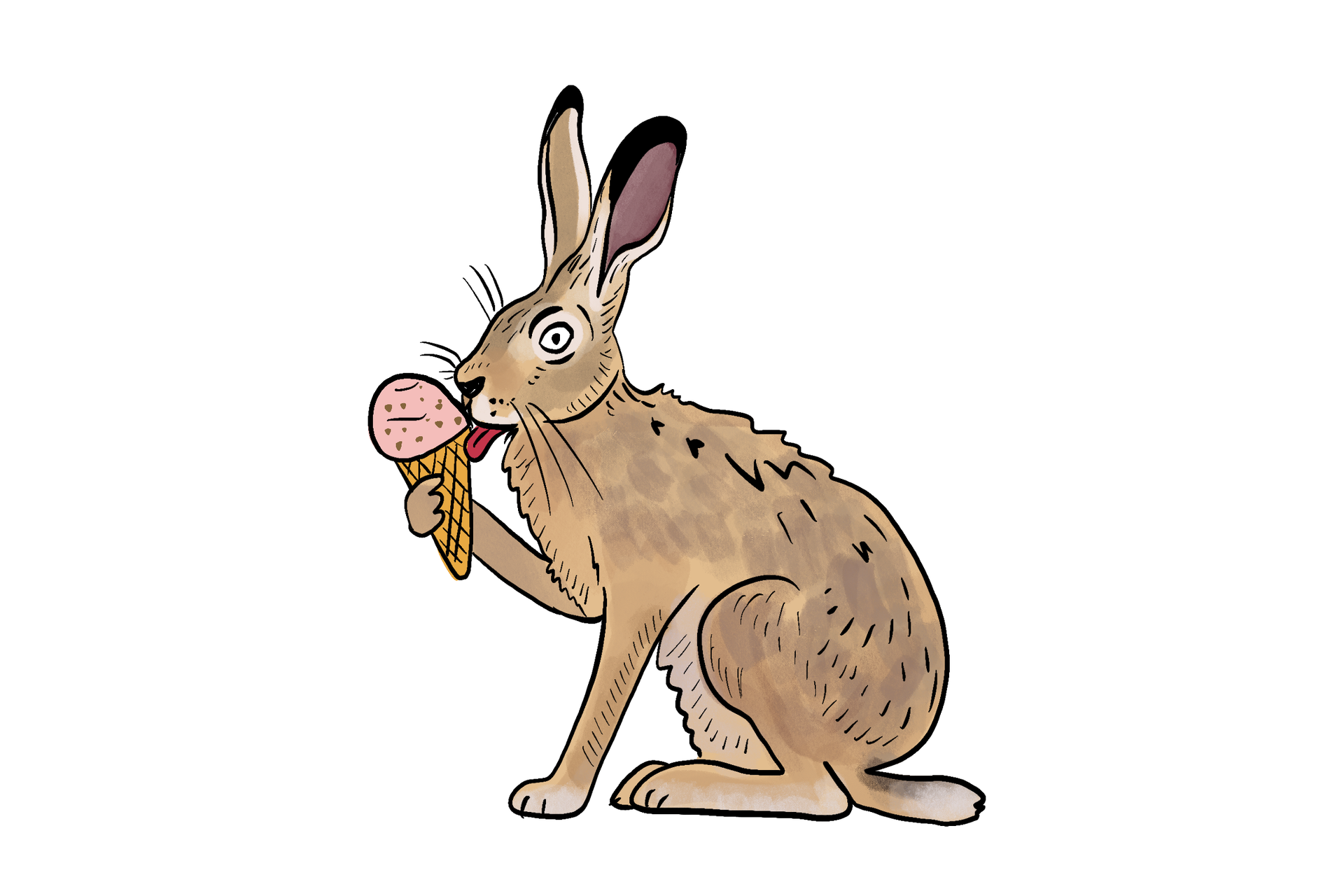There is a long Jewish tradition of creating richly illuminated haggadot for the Passover seder, and many from medieval Ashkenaz depict a rabbit hunt. Wait a minute! There are no rabbits in the exodus story, so why this persistent theme? As you may not be surprised to hear, we have to travel through today’s daf a bit before we get there, so fasten your seatbelt and enjoy the ride.
On yesterday’s daf, in the context of discussing whether two different sanctifications can be performed over the same cup of wine, the Gemara asked what happens when a festival begins at sundown on Saturday and therefore immediately follows Shabbat. That’s right, we’re once again exploring the challenges that arise when the 14th of Nisan coincides with Shabbat.
Havdalah, the ritual that concludes Shabbat, ordinarily includes the following blessings: a blessing over wine (yayin), one over spices (besamim), another over a multi-wicked candle (ner), and a blessing of separation between the sanctity of Shabbat and the ordinary time that is experienced the rest of the week (havdalah). When Saturday night coincides with the start of a festival, the spices are omitted (the festival itself provides the spice). Havdalah is performed with a cup of wine, and so is Kiddush for the incoming festival. In the spirit of the Gemara’s inquiry over whether two santifications can be performed on one cup, the question becomes: how do we correctly merge these two rituals?
The Gemara records eight different proposals for this merger. Each rabbi presents their view as an acronym, using the first letter of the names of the blessings:

Help us keep Jewish knowledge accessible to millions of people around the world.
Your donation to My Jewish Learning fuels endless journeys of Jewish discovery. With your help, My Jewish Learning can continue to provide nonstop opportunities for learning, connection and growth.
kuf (ק) = Kiddush (sanctifying the festival)
yod (י) = yayin (wine for Kiddush and Havdalah)
nun (נ) = ner (Havdalah candle)
heh (ה) = havdalah (separation between Shabbat and the rest of the week)
Here are the eight different positions:
Rav said the proper order of the blessings is yod, kuf, nun, heh.
Shmuel said the order is yod, nun, heh, kuf.
Rabba said the order is yod, heh, nun, kuf.
Levi said the order is kuf, nun, yod, heh.
The rabbis say the order is kuf, yod, nun, heh.
Mar, son of Rabbana, said the order is nun, kuf, yod, heh.
The sage named Marta said in the name of Rabbi Yehoshua the order is nun, heh, yod, kuf.
Rabbi Yishmael, son of Rabbi Yosei, said in the name of his father, who himself said it in the name of Rabbi Yehoshua ben Hananya: The order of the blessings is nun, heh, yod, kuf.
If you’re interested (and brave), check out Rashi’s commentary. He gives an explanation that supports each of these positions.
The Gemara accepts Rav’s opinion (yod, kuf, nun, heh) which interposes the Kiddush right next to the blessing over the wine that is said as part of Havdalah (two sanctifications, one cup).
But we’re not done! The Gemara now presents a further disagreement about when the blessing for festive occasions (Shehechiyanu, which the rabbis call zeman) is inserted. A new set of acronyms is presented, this time with the letter zayin representing Shehechiyanu.
Abaye said that the proper order is yod, kuf, zayin, nun, heh.
Rava said the order is yod, kuf, nun, heh, zayin.
And, the Gemara concludes: The halakhah is in accordance with the opinion of Rava.
Yup, it doesn’t always happen, but in this case we have a winner: yod, kuf, nun, heh, zayin. When sitting down for a festival meal (Passover or otherwise) on a Saturday evening at the conclusion of Shabbat you can simply say the acronym “YaKNeHaZ” to remind yourself of the correct order of blessings.
Hang on, you might be muttering to yourself, what about the rabbits? It turns out that not only is YaKNeHaZ hard to pronounce, it can also be hard to remember. That is where the rabbits come in. You see, there is a phrase in Old German, jag den has, and no, it’s not a brand of delicious ice cream. It means “hunt the hare,” and sounds a bit like YaKNeHaZ. These pictures of hare-hunting scenes often appear in the haggadah near Kiddush. As the theory goes, the illuminations of rabbit hunts in these medieval haggadot were meant to jog the memory of those leading the seder about the order of the blessings.

Luckily for those of us who don’t speak Old German and who also can’t remember the acronym, most of today’s haggadot contain instructions about what to do when the seder falls on a Saturday night.
You can see several examples of these rabbits — who are often depicted as clever Jews escaping their wicked captors — and explore other possible explanations for their inclusion in the Haggadah here.
Read all of Pesachim 103 on Sefaria.
This piece originally appeared in a My Jewish Learning Daf Yomi email newsletter sent on March 4th 2021. If you are interested in receiving the newsletter, sign up here.



